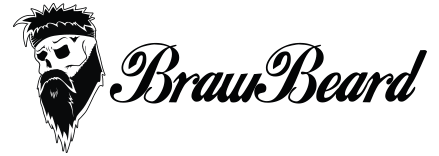
How to Train Your Beard to Grow in the Right Direction
How to Train Your Beard to Grow in the Right Direction.
There is no beard in existence that grows perfectly straight or evenly naturally. Some hairs will curl, twist, or grow sideways, which can create a messy or patchy appearance.
If you’ve ever wondered if it's possible to train your beard to grow in the right direction, you’re not alone. With consistency, the right grooming tools, and the right products, you can guide your beard into the shape you want.
Why Beard Hair Grows in Different Directions
Beard growth patterns are influenced by genetics, hair follicle angle, and skin texture. That’s why some men have beards that naturally grow straight down while others experience crazy growth sideways, upward, or even in curls and spirals. The good news? You can train your beard over time using simple techniques. I have done it myself with my moustache to avoid chewing on it daily.
Step-by-Step: Training Your Beard
1. Wash Your Beard Regularly
It's best to start with a clean beard. Choose to use a dedicated beard shampoo like Braw Beard Wash, which includes gentle cleansing agents and ingredients like aloe vera and salicylic acid to reduce irritation and sweat buildup. A clean beard is easier to style and tame.
2. Apply Decent Beard Oil Daily
Softening your beard makes it more manageable. Braw Beard oil, which contains ingredients like jojoba, argan, and hempseed oil, nourishes both the beard and the skin underneath, keeping the hair soft, reducing breakage, and making it easier to style.

3. Use a Beard Brush or Comb
Using a boar bristle brush or a wide-tooth comb can help train your beard in the direction you want. Braw Beard brushes assist in styling but also help evenly distribute products like beard oil or beard balm throughout the hair, ensuring that each hair strand gets even treatment. This distribution helps train your beard to grow in the desired direction. It's best to brush daily, ideally after applying beard care products, to help style your beard. Always brush in the direction you want the hair to grow, which is usually downward or outward, depending on your chosen style.
4. Using Beard Butter or Balm for Hold
For added control, use a beard butter or balm. Braw Beard Butter includes nourishing butters like mango, shea, and avocado, as well as just enough beeswax for gentle hold. This helps keep stubborn hairs in place throughout the day.
5. Stick to a Routine
Training your beard takes time and patience. Stick with your beard care routine: wash, oil, apply beard balm or butter and then brush. Over weeks and months, your beard will begin to follow your lead.
What Tools Are For
-
Beard brush - For directing hair and distributing beard oils/balms.
-
Wide-tooth beard comb - For detangling, removing snags and setting direction of the hair.
-
Blow dryer (on cool or warm setting) - Optional, but can help reinforce shape with gentle heat and a brush.
Final Tips for Beard Direction Training
Be patient - beard hair has memory, but it takes time to change habits.
Use lightweight, non-greasy products like Braw Beard oil and butter.
Brush daily - consistency is key.
Avoid touching or pulling at your beard throughout the day.
Stick to the routine, trust the process, and your beard will follow your lead.
Feel the difference and join the #Brawtherhood
Thank you for reading; I hope it has been helpful.
JJ
Scottish beard care.
Born in Scotland, enjoyed Worldwide.
P.S. Use code – brawblog – at www.brawbeard.com for 10% off
Follow Braw Beard:
Instagram – http://instagram.com/brawbeardoils
Facebook – http://facebook.com/brawbeardoils/
Twitter – http://twitter.com/brawbeardoil
Subscribe to the Braw Beard Youtube channel for more videos. https://www.youtube.com/brawbeard
Catch up on the Braw Cast podcast HERE
Youtube – HERE
Spotify – HERE
Apple Podcasts – HERE
Google Podcasts – HERE












